Stribog – Slavic God Of Winds Associated With Destruction, Harvest, Evil And Good
A. Sutherland - AncientPages.com - In Slavic mythology, Stribog was the god of wind, storms, and air and an ancient deity of the heavens. He was a connector of heaven and Earth.
People largely depended on his actions because he could bring the frost and, somehow, also wealth while giving away the right part of the deal to the right person.
Therefore, he was often associated with the distribution of riches.
The winds were seen as Stribog's grandchildren, but he had control over them, and according to the beliefs of the Eastern Slavs, he was requested for successful winds.
As a powerful weather god associated with the atmosphere, Stribog could control lightning, whirlwinds, hurricanes, winds, and storms over oceans and seas on Earth. Stribog could also change weather and disperse clouds, stop a long season of rain, and send Yarilo-Sun with a longer period of sunny weather to warm the fields and gardens with his rays.
Each kind of weather, in general, was under his power.
Stribog In Folklore
Throughout history, our ancestors praised and honored him as the destroyer of people's evil deeds and intentions. He also had power over stars, and like the other atmospheric deities, he was a heroic fighter and powerful destroyer.
He launched devastating winds and terrifying, powerful gales and usually did not enjoy recognition among people.
In folklore, he could carry off girls and destroy homes and fields. Air vortices were considered dangerous; therefore, a thunderbolt was usually called for help by terrified people who did not understand ominous atmospheric phenomena.
Throwing stones, sticks, or knives was also practiced, and many suitable spells were used. The Slavs also knew the concept of the wind as a soul, but mainly the souls of people who died of unnatural death.
 Stribog by Dušan Božić. Source
Stribog by Dušan Božić. Source
God Stribog, usually described as a thin older man with long, tangled gray hair and a very white-bearded beard, had many counterparts in various mythologies worldwide. He was often compared to the Hindu god Vayu (wind), a primary Hindu deity, the lord of the winds, who performed almost the same functions as the Slavic god Stribog.
Another counterpart was Ehecatl, the god of wind, very important in Aztec mythology and in Mesopotamian beliefs; Enlil was the Sumerian god of air, wind, and breath, while Njord (Niord) was a Vanir god of the seas, fishermen, ships and prosperity in ancient Norse beliefs, who was both feared and respected by fishermen and seafarers, as he ruled over the waves and winds.
Ilmarinen was originally the Finnish pagan god of the air. He is often regarded as the god of air and weather, and his functions are closely related to those of Stribog of the Slavs.
However, Slavic beliefs in the power of wind varied greatly. Some believed that the wind was good and even holy. It was given human form or personality; it was charmed, often invited to supper, and honored as a deity associated with death, war, harvest, evil, and good.
Stribog was treated independently as an atmospheric deity in Slavic folklore and mythology. However, it is worth mentioning that he often served as a helper for the principal gods of the pantheon.
It does not mean, however, that Stribog (or his counterparts, who were also masters of winds, being a personification of the powers of nature) is not mighty. Severe damages inflicted on man and his work attest to powerful winds present on Earth since the beginning of time.
Written by – A. Sutherland - AncientPages.com Senior Staff Writer
Updated on April 6, 2024
Copyright © AncientPages.com All rights reserved. This material may not be published, broadcast, rewritten or redistributed in whole or part without the express written permission of AncientPages.com
More From Ancient Pages
-
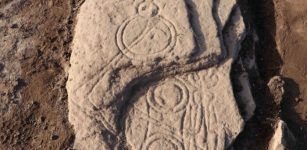 Rare Pictish Symbol Stone Found Near The Battle Of Nechtansmere Site
Archaeology | Mar 7, 2022
Rare Pictish Symbol Stone Found Near The Battle Of Nechtansmere Site
Archaeology | Mar 7, 2022 -
 New Hope To Finally Find Tomb Of Alexander The Great
Archaeology | Mar 6, 2019
New Hope To Finally Find Tomb Of Alexander The Great
Archaeology | Mar 6, 2019 -
 New Fossil Link In Bird Evolution Discovered
Evolution | Sep 7, 2023
New Fossil Link In Bird Evolution Discovered
Evolution | Sep 7, 2023 -
 Fossil Of Prehistoric Saber-Toothed Cat Found In Texas
Fossils | Jun 11, 2024
Fossil Of Prehistoric Saber-Toothed Cat Found In Texas
Fossils | Jun 11, 2024 -
 Great Sumerian God Enki: Creator, Protector Of Humanity, Brilliant Scientist And Patron Of Craftsmen And Artisans
Featured Stories | May 9, 2017
Great Sumerian God Enki: Creator, Protector Of Humanity, Brilliant Scientist And Patron Of Craftsmen And Artisans
Featured Stories | May 9, 2017 -
 Melisandre, The Red Woman: The History Behind Game Of Thrones’ Mysterious Mystic
Featured Stories | Jun 19, 2019
Melisandre, The Red Woman: The History Behind Game Of Thrones’ Mysterious Mystic
Featured Stories | Jun 19, 2019 -
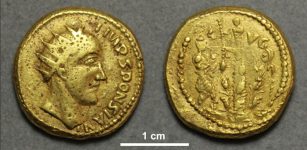 Ancient Roman Coins Thought To Be Fakes Are Authentic – Experts Say
Archaeology | Nov 23, 2022
Ancient Roman Coins Thought To Be Fakes Are Authentic – Experts Say
Archaeology | Nov 23, 2022 -
 Last Homo Erectus Lived 117,000 Years Ago At Ngandong
Archaeology | Dec 19, 2019
Last Homo Erectus Lived 117,000 Years Ago At Ngandong
Archaeology | Dec 19, 2019 -
 Large Fresco Depicting The Procession Of The Wine God Dionysus Found In Pompeii
Archaeology | Feb 28, 2025
Large Fresco Depicting The Procession Of The Wine God Dionysus Found In Pompeii
Archaeology | Feb 28, 2025 -
 Strange Tale Of Mysterious Thousand-Year-Old Underground Network Of Caves And Encounters With Subterranean Dwellers
Ancient Mysteries | Jul 13, 2022
Strange Tale Of Mysterious Thousand-Year-Old Underground Network Of Caves And Encounters With Subterranean Dwellers
Ancient Mysteries | Jul 13, 2022 -
 Unique Purbeck Marble Found On England’s Oldest Historic Shipwreck
Archaeology | Jun 14, 2024
Unique Purbeck Marble Found On England’s Oldest Historic Shipwreck
Archaeology | Jun 14, 2024 -
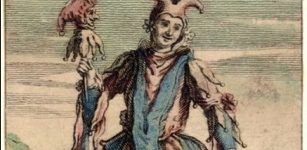 Troublesome Momus: Deity Of Irony, Ridicule, Sarcasm And Harmful Jokes In Greek And Roman Mythology
Featured Stories | Mar 14, 2022
Troublesome Momus: Deity Of Irony, Ridicule, Sarcasm And Harmful Jokes In Greek And Roman Mythology
Featured Stories | Mar 14, 2022 -
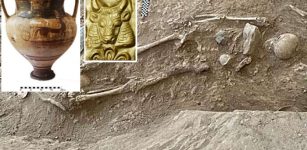 Tombs Rich In Artifacts Discovered By Swedish Expedition In Cyprus
Archaeology | Jul 6, 2023
Tombs Rich In Artifacts Discovered By Swedish Expedition In Cyprus
Archaeology | Jul 6, 2023 -
 Neanderthals: The Oldest Art In The World Wasn’t Made By Humans
Featured Stories | Jan 17, 2023
Neanderthals: The Oldest Art In The World Wasn’t Made By Humans
Featured Stories | Jan 17, 2023 -
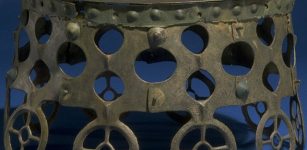 Mysterious Balkåkra Disc – Rare Strange Bronze Artifact Found In A Bog
Artifacts | Jul 25, 2019
Mysterious Balkåkra Disc – Rare Strange Bronze Artifact Found In A Bog
Artifacts | Jul 25, 2019 -
 ‘Viking Disease’ Hand Disorder May Come From Neanderthal Genes
Archaeology | Jun 14, 2023
‘Viking Disease’ Hand Disorder May Come From Neanderthal Genes
Archaeology | Jun 14, 2023 -
 How Did Native American Indian Chiefs Get Their Names?
Ancient History Facts | May 27, 2016
How Did Native American Indian Chiefs Get Their Names?
Ancient History Facts | May 27, 2016 -
 Relics From Day-To-Day Life At Shakespeare’s Home – Now Shown In New Virtual Exhibition
Archaeology | Dec 11, 2020
Relics From Day-To-Day Life At Shakespeare’s Home – Now Shown In New Virtual Exhibition
Archaeology | Dec 11, 2020 -
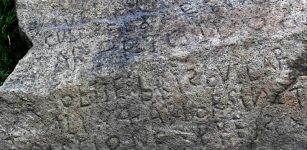 Mysterious Rock Inscription Found In Brittany Baffles Experts – Reward If You Can Decipher It
Archaeology | May 15, 2019
Mysterious Rock Inscription Found In Brittany Baffles Experts – Reward If You Can Decipher It
Archaeology | May 15, 2019 -
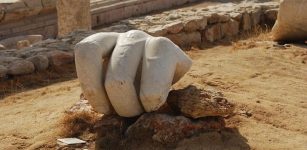 Mystery Of The Giant Hand At The Temple Of Hercules
Featured Stories | Jul 17, 2019
Mystery Of The Giant Hand At The Temple Of Hercules
Featured Stories | Jul 17, 2019

